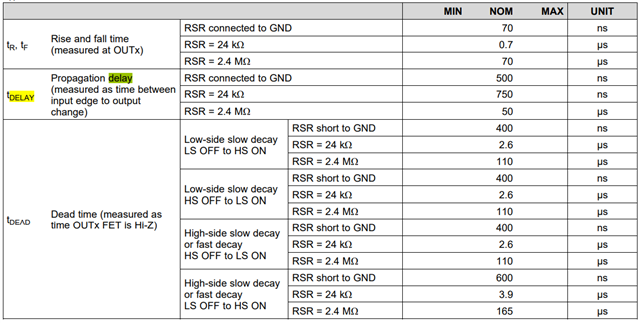We are trying to smooth out our motor voltage as much as possible. Its a small battery powered system, so the PWM is mirrored in the battery voltage drop. This can cause problems. So our goal is to increase the PWM frequency and increase the SLEW rate to smooth this. In theory, it can blend into a nearly straight line.
What is the maximum PWM frequency? The data sheet says 50k, but is that a hard limit? We've done testing and it works fine at 200kHz. But maybe that is doing some damage we can't see.



